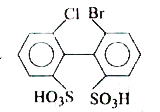In which of the following, functional group isomerism is not possible ?
Alcohols
Aldehydes
Alkyl halides
Cyanides
The correct Answer is:C
To determine in which of the following options functional group isomerism is not possible, we need to analyze each option based on the definition of functional group isomerism. Functional group isomerism occurs when two or more compounds have the same molecular formula but different functional groups.
1. Understanding Functional Group Isomerism:
- Functional group isomerism occurs when compounds have the same molecular formula but different functional groups. For example, alcohols and ethers can have the same molecular formula (C3H8O) but different functional groups.
2. Analyzing Option A: Alcohols:
- Alcohols (e.g., propanol, CH3CH2OH) can show functional group isomerism with ethers (e.g., dimethyl ether, CH3OCH3). Therefore, alcohols can exhibit functional group isomerism.
3. Analyzing Option B: Aldehydes:
- Aldehydes (e.g., formaldehyde, CH2O) can show functional group isomerism with ketones (e.g., acetone, C3H6O). Thus, aldehydes can also exhibit functional group isomerism.
4. Analyzing Option C: Alkyl Halides:
- Alkyl halides (e.g., chloroethane, C2H5Cl) consist of halogen atoms (like Cl, Br, F) attached to carbon. There are no different functional groups that can be formed from alkyl halides, so they do not exhibit functional group isomerism. Therefore, alkyl halides cannot form functional group isomers.
5. Analyzing Option D: Cyanides:
- Cyanides (e.g., acetonitrile, CH3CN) can show functional group isomerism with isocyanides (e.g., methyl isocyanide, CH3N≡C). Thus, cyanides can also exhibit functional group isomerism.
Conclusion:
Based on the analysis, the option in which functional group isomerism is not possible is C: Alkyl Halides.
Final Answer:
C: Alkyl Halides
- Functional group isomerism occurs when compounds have the same molecular formula but different functional groups. For example, alcohols and ethers can have the same molecular formula (C3H8O) but different functional groups.
- Alcohols (e.g., propanol, CH3CH2OH) can show functional group isomerism with ethers (e.g., dimethyl ether, CH3OCH3). Therefore, alcohols can exhibit functional group isomerism.
- Aldehydes (e.g., formaldehyde, CH2O) can show functional group isomerism with ketones (e.g., acetone, C3H6O). Thus, aldehydes can also exhibit functional group isomerism.
- Alkyl halides (e.g., chloroethane, C2H5Cl) consist of halogen atoms (like Cl, Br, F) attached to carbon. There are no different functional groups that can be formed from alkyl halides, so they do not exhibit functional group isomerism. Therefore, alkyl halides cannot form functional group isomers.
- Cyanides (e.g., acetonitrile, CH3CN) can show functional group isomerism with isocyanides (e.g., methyl isocyanide, CH3N≡C). Thus, cyanides can also exhibit functional group isomerism.
Based on the analysis, the option in which functional group isomerism is not possible is C: Alkyl Halides.
C: Alkyl Halides
Topper's Solved these Questions
- ORGANIC CHEMISTRY : SOME BASIC PRINCIPLES AND TECHNIQUESBook:NCERT EXEMPLAR ENGLISHChapter:ORGANIC CHEMISTRY : SOME BASIC PRINCIPLES AND TECHNIQUESExercise:Short Answer type question
Explore 27 Videos
- ORGANIC CHEMISTRY : SOME BASIC PRINCIPLES AND TECHNIQUESBook:NCERT EXEMPLAR ENGLISHChapter:ORGANIC CHEMISTRY : SOME BASIC PRINCIPLES AND TECHNIQUESExercise:Matching the columns
Explore 5 Videos
- HYDROGENBook:NCERT EXEMPLAR ENGLISHChapter:HYDROGENExercise:LONG ANSWER TYPE QUESTIONS
Explore 8 Videos
- REDOX REACTIONSBook:NCERT EXEMPLAR ENGLISHChapter:REDOX REACTIONSExercise:LONG ANSWER TYPE QUESTIONS
Explore 6 Videos
Similar Questions
Knowledge Check
In which of the followinng functional group isomerism is not possible?
AAlcoholsBAldehdyesCAlkyl halidesDCyanidesWhich of the following will show optical isomerism?
A B
B C
C D
D
Which of the following cannot show functional group isomerism?
View SolutionWhich of the following represents functional isomerism ?

View SolutionWhich of the following is a pair of functional group isomers?
View SolutionWhich of the following will show optical isomerism?
View SolutionWhich of the following is not functional group isomer of cyclopentanone.
View SolutionWhich of the following will show optical isomerism? .
View Solution